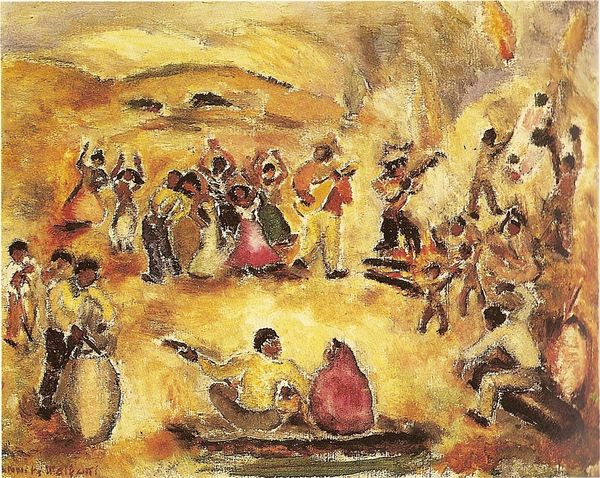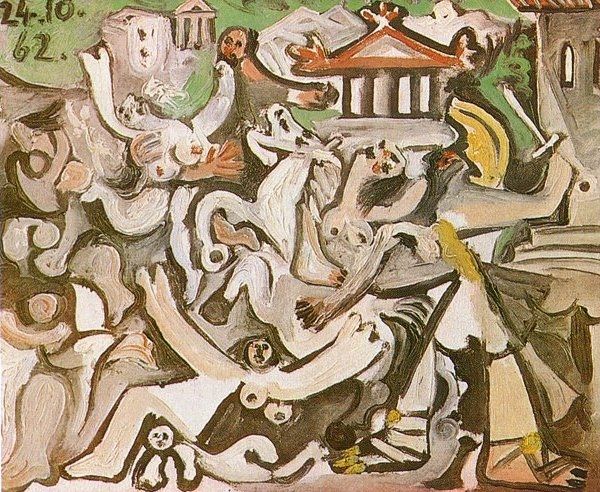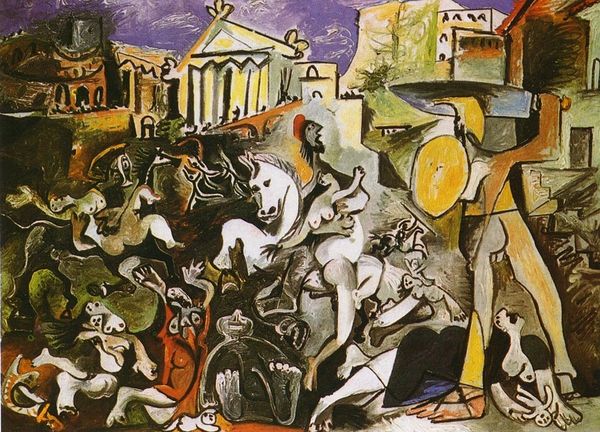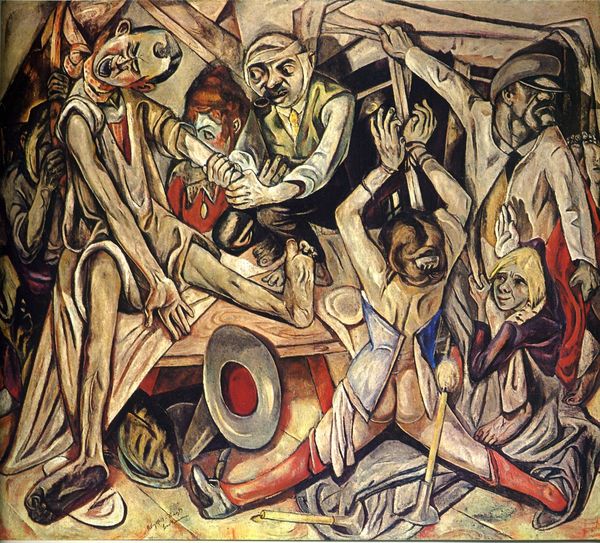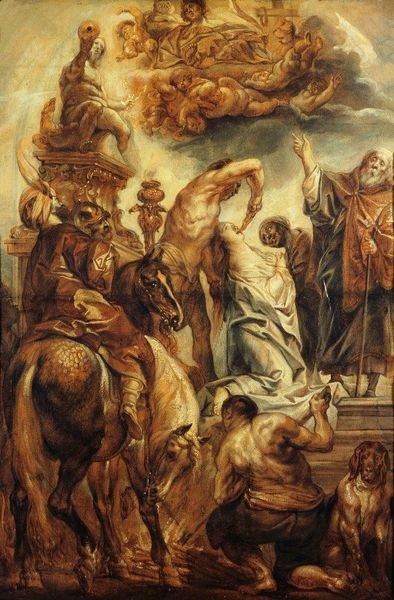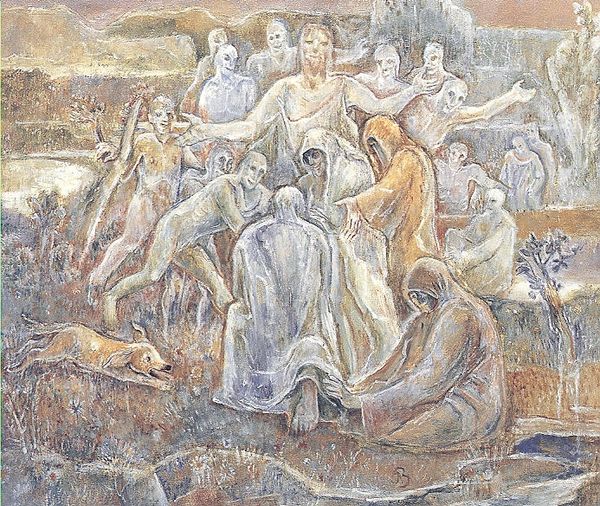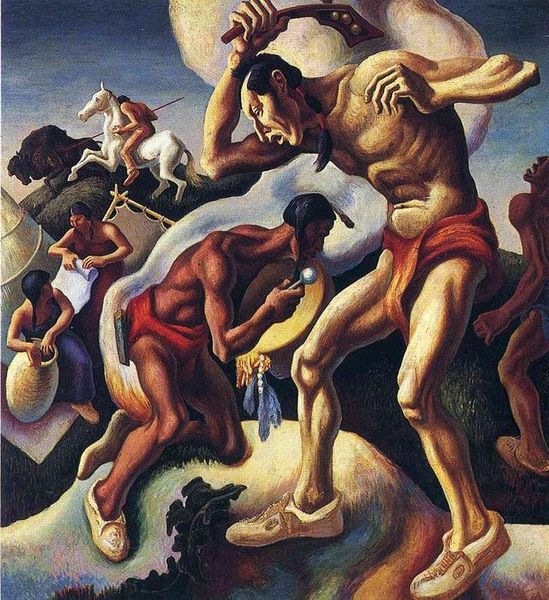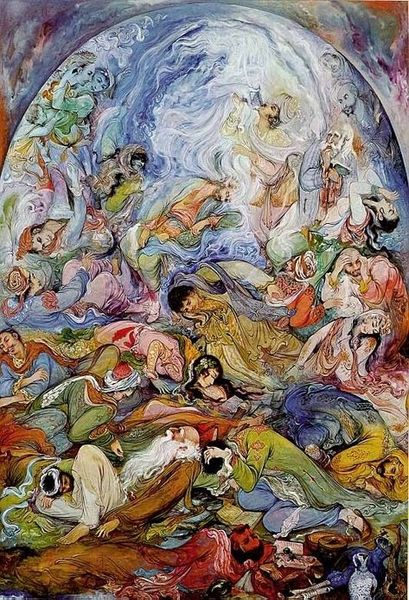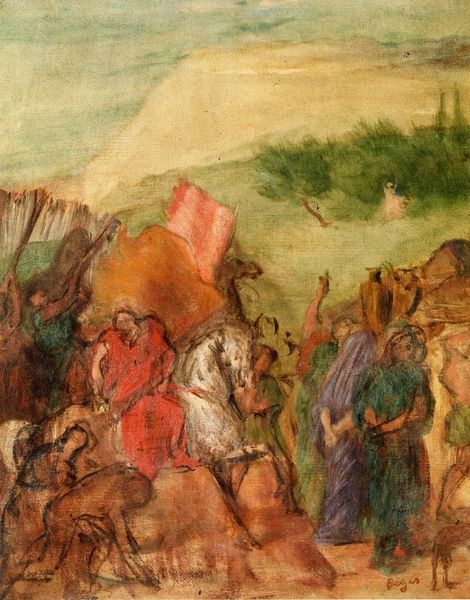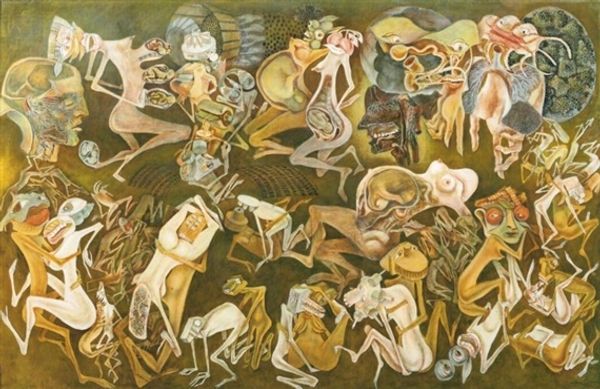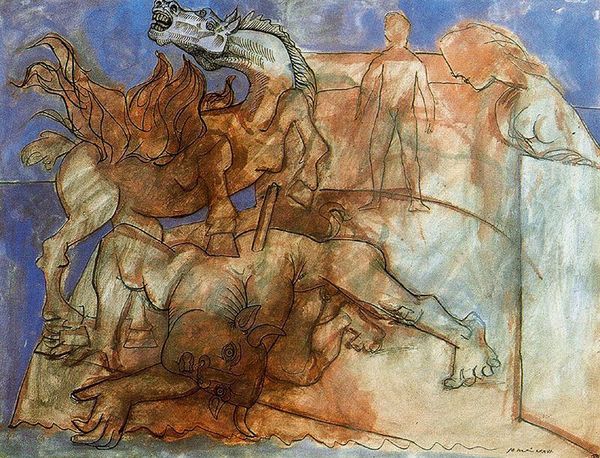
oil-paint
#
oil-paint
#
figuration
#
oil painting
#
expressionism
#
mythology
#
history-painting
#
nude
#
expressionist
Copyright: Public domain
Editor: Jules Pascin's "The Temptation of Saint Anthony," painted in 1912 using oil paint, presents a swirling mass of figures that feels almost chaotic at first glance. What strikes me is the sheer volume of bodies; it's quite overwhelming. What do you see in this piece, particularly when thinking about the materials used? Curator: It's interesting that you begin with the volume. For me, I immediately consider the artist’s choice to use oil on canvas at this moment in history, 1912. The turn of the century was a hotbed of new possibilities in material explorations across the disciplines, questioning hierarchies around labor through challenging the established “high art” focus of the academy, its salons, and exclusive galleries. Here Pascin employs a seemingly traditional approach. Why? What does it mean to depict such a transgressive scene—Saint Anthony tormented by visions of earthly pleasures—using these particular means? Editor: So, you're thinking about how the traditional material contrasts with the scandalous subject matter? It almost feels like Pascin is making a statement by using oil paint – an established, respected medium – to depict something so... unconventional and, well, almost vulgar, in a sense? Curator: Precisely. Look at the application, the visible brushstrokes. This isn’t the smooth, polished finish of academic painting; Pascin foregrounds the act of making itself. What's at stake here, and for whom? Who were the viewers of paintings such as this one? He's emphasizing the labor and materiality involved, prompting us to consider not just what's depicted but how it’s being presented and consumed. We might also explore who he was responding to—perhaps Ingres? Editor: That makes me rethink my initial reaction. I was caught up in the scene itself, but considering the materials, it shifts the focus to the societal implications. Curator: Indeed. Considering the artist and the context together shows us how Pascin positions himself vis-à-vis traditional methods, disrupting conventional social mores through subject matter while, quite brilliantly, foregrounding the means of production. Editor: That's a perspective I hadn’t fully appreciated, looking at art in this material-centered context has made the work so much more meaningful. Thank you.
Comments
No comments
Be the first to comment and join the conversation on the ultimate creative platform.
